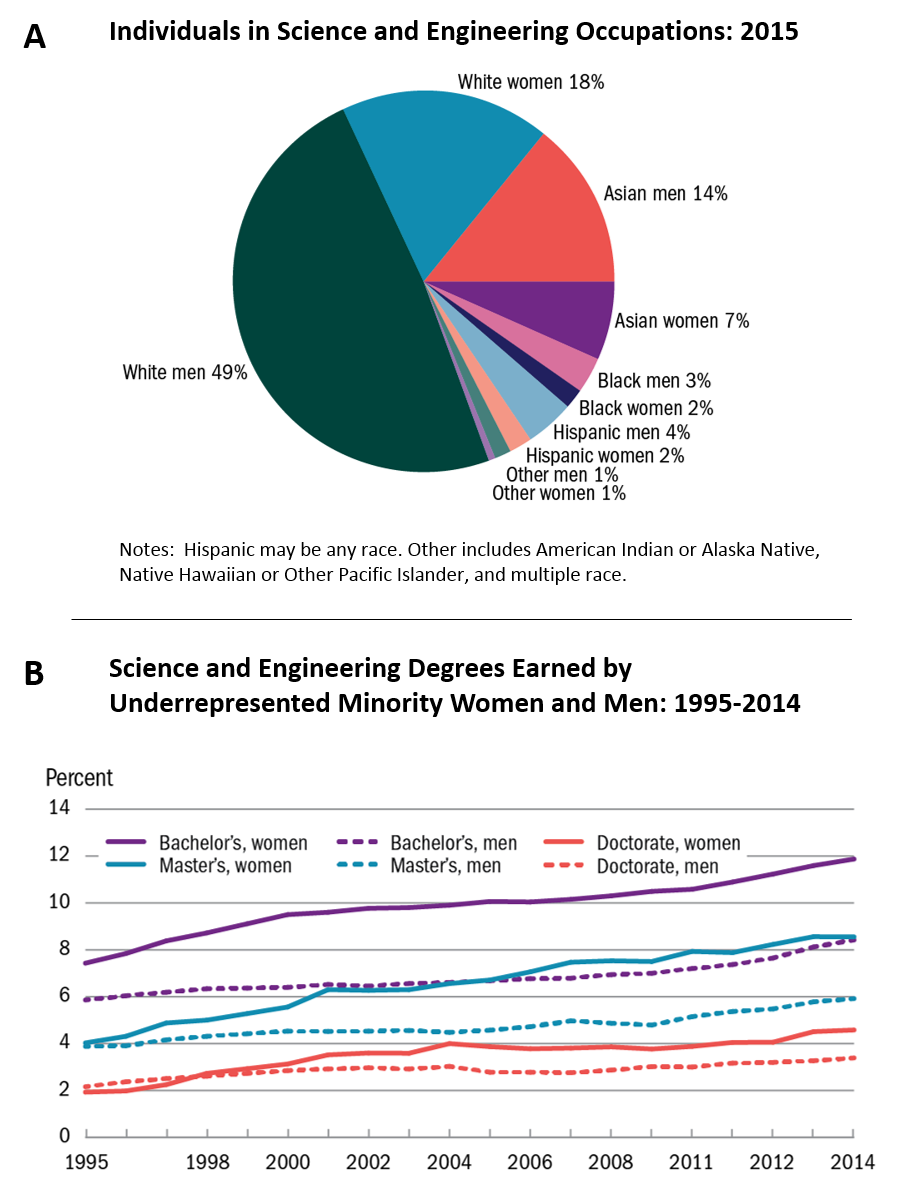On December 27, 2017, the life sciences community lost a pioneer in neurobiology and an advocate for equality in science. Dr. Ben A. Barres passed away at the age of 63. His work focused on the critical role of glia (non-neuronal cells) in the brain and how they interface with neurons to maintain cognitive function.
Equally remarkable was the more personal side of his life. In 1997, Dr. Barbara Barres transitioned from female to male and lived the remainder of his life as Ben Barres. I read a number of the articles that Dr. Barres wrote and came across one that particularly caught my attention. In 2006 in response to several statements blaming gender imbalance in STEM fields on women’s innate in-aptitude, Ben wrote a Commentary in Nature that touched on his experience as a female scientist versus how he was treated as a male scientist. (Dr. Barres makes many very interesting points in the article, so I would encourage anyone to read it.) Prior to transitioning, he was often dismissed or interrupted but had a completely different experience as a male scientist. Dr. Barres even recounted that he overheard a colleague praising a seminar he gave, and adding that his work was “much better than his sister’s”1. The colleague was unaware that the research was the same and that he was talking about the same person. What a unique perspective to have been the one in the position of discrimination and then to be removed from it.
Empathy for a person’s situation is a strong motivator to take steps to fight discrimination. But empathy is not enough. Dr. Barres effectively used his position as a male professor in science to speak out for those that were at a disadvantage or in the minority.
I have recently been considering how to be an advocate for others facing discrimination when it might be more challenging to employ empathy to put myself in another person’s place. As a woman, it’s easy for me to relate to and recognize situations involving discrimination against women. I acknowledge that my path as a female scientist was shaped by strong women who came before me. In comparison to more senior female scientists, I had it easy during my training. No one blatantly said that I couldn’t do something because I was a woman. No one questioned my data because they were incredulous that a woman could produce quality results. I’m certainly not saying that bias no longer exists; it certainly occurs in more subtle forms. But because of confidence that I gained from many positive interactions, it has been easier to handle the occasional obstacle. I know that it’s ok to be proud of what I’ve accomplished as a scientist. Despite advances in equality of men and women in the sciences, disparities still remain, and there’s certainly more work to be done, particularly in the engineering, computer sciences, mathematics, and physics fields, which are categorized as low participation fields for women1.
A striking statistic that warrants attention is the miniscule percentage of individuals of color in the sciences. For example, only 1.6% of scientists and engineers are black women, and 3.2% are black men, according to a 2017 NSF report (Figure 1A)2. Underrepresented minority groups as a whole earned about 20% of the science and engineering bachelor’s degrees awarded in 2014 (Figure 1B), despite comprising 38% of the United States adult population2.

What steps can be taken to remedy this inequality? How can my experience as a woman in science help those who have faced racial discrimination? To begin to explore approaches for concrete solutions, I recently took a discussion course through the Madison Institute for the Healing of Racism. The goal of this 10-week series was to learn about the roots and causes of racism, build awareness about how pervasive racism actually is, and promote a process of healing to move toward eradicating racism. This series was eye-opening for me. There was so much that I didn’t (and still don’t) know about the history of racism. The sessions forced me to go out of my comfort zone and see how painful racism is and has been for people of color and to recognize that my privilege as white person comes with the responsibility of speaking out for and supporting those who are unfairly placed at a disadvantage. The hardest part is how to take action thoughtfully and effectively.
I don’t know what it’s like to feel discrimination based on the color of my skin, but I would like to propose that the same things that are helping women to become more represented in the sciences can begin to encourage and nurture people of color to enter science fields. There are four main resources that I think are critical for increasing the number of people of color in science:
- Individuals in positions of influence who serve as advocates
- Role models of color in science
- Mechanisms for financial, professional, and personal support
- Opportunities to gain experience in science at all age levels
These resources promote confidence and awareness of opportunities, and support pursuit of one’s career goals. In considering where I really started developing confidence as a female scientist, I looked back to my days in graduate school at the University of Rochester. The Graduate Women in Science group, with support from the university and a NIH T32 training grant, invited women (and men) from various careers to talk with us about their career path and how they dealt with challenges that they faced. Those meetings were inspiring—I met someone like me that overcame obstacles and became successful. It gave me a feeling of “I can do this!” Similar programs for people of color exist and should receive more support and attention. One example of such a program is the Science and Medicine Graduate Research Scholars at the University of Wisconsin-Madison, a fellowship program for underrepresented graduate students that provides funding opportunities and also pairs new students with more senior graduate students from the program to offer mentoring for professional development.
A huge factor in breaking down barriers for women was to recognize bias that results from sexism and then disprove those stereotypes. I think that a similar approach should be taken to pave the way for people of color. I don’t have all of the solutions, but I hope that this post sparks interest in getting the conversation started to make a career in science open to anyone. Promoting and encouraging diversity in science truly benefits all.
“Injustice anywhere is a threat to justice everywhere.” –Dr. Martin Luther King, Jr.
1 2006. Barres, B.A. Does Gender Matter? Nature 442, 133–136. doi:10.1038/442133a https://www.nature.com/articles/442133a
2 2017 Report on Women, Minorities, and Persons with Disabilities in Science and Engineering, National Science Foundation https://nsf.gov/statistics/2017/nsf17310/

